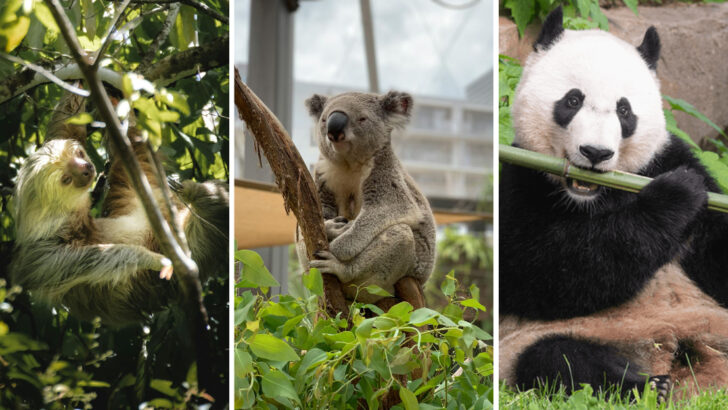Some animals have mastered the art of doing absolutely nothing. While others are out hunting, building, or running for their lives, these creatures have one goal—expend as little energy as possible.
From sloths that barely bother to move to cats who sleep like it’s their full-time job, these lazy legends have found a way to survive while putting in minimal effort. They don’t rush. They don’t stress. They just exist—at their own slow, sleepy pace.
But don’t be fooled—there’s a method to their madness. Being lazy isn’t just a lifestyle; for some, it’s a survival strategy. Why waste energy when you can let the world come to you?
If you’ve ever wished you could spend the day napping guilt-free, these animals are about to become your new spirit guides. Let’s meet nature’s true relaxation experts.
Three-Toed Sloth
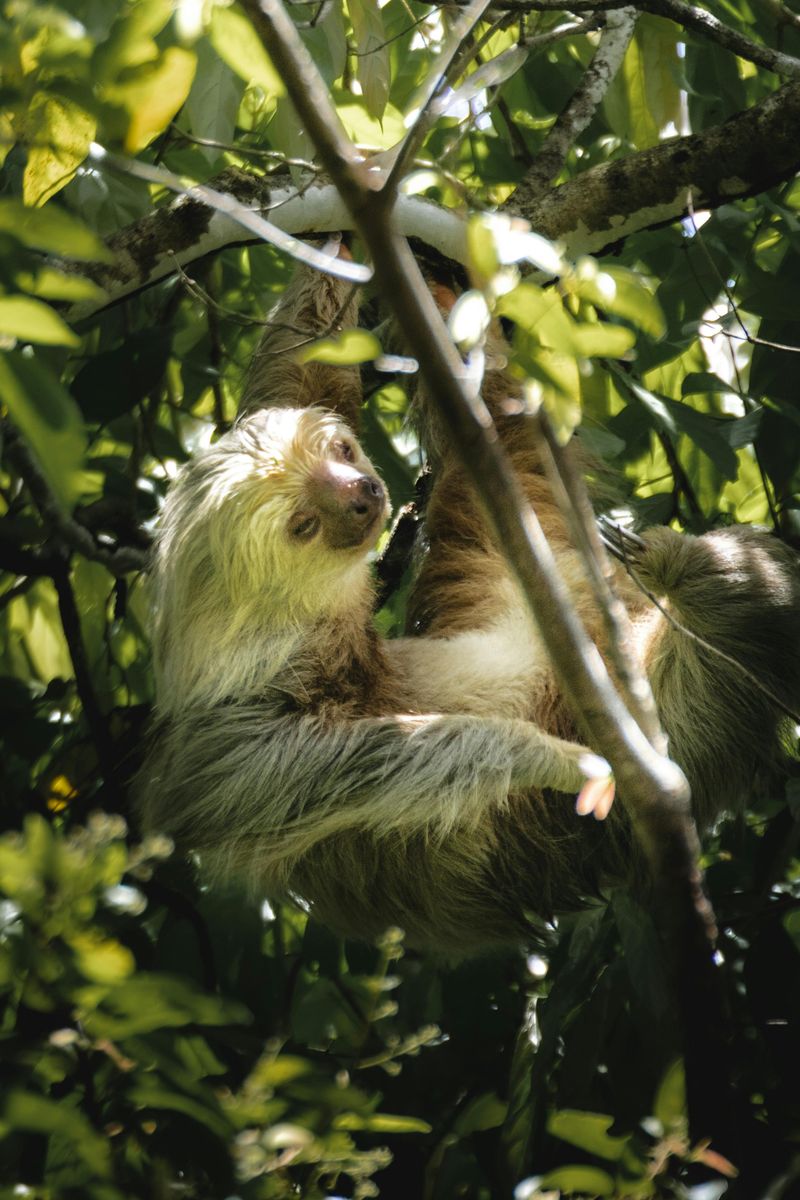
The three-toed sloth is a true master of lazy living, spending up to 20 hours a day resting. Found in the rainforests of Central and South America, these creatures are perfectly adapted to a life of leisure.
Their slow metabolism means they have no need to rush, allowing them to conserve energy and stay still for long periods. Sloths hang upside down from tree branches, moving only when necessary, and even their digestive process takes weeks to complete.
This serene existence is not just about laziness; it’s a survival strategy in a world where energy conservation is key.
Koala
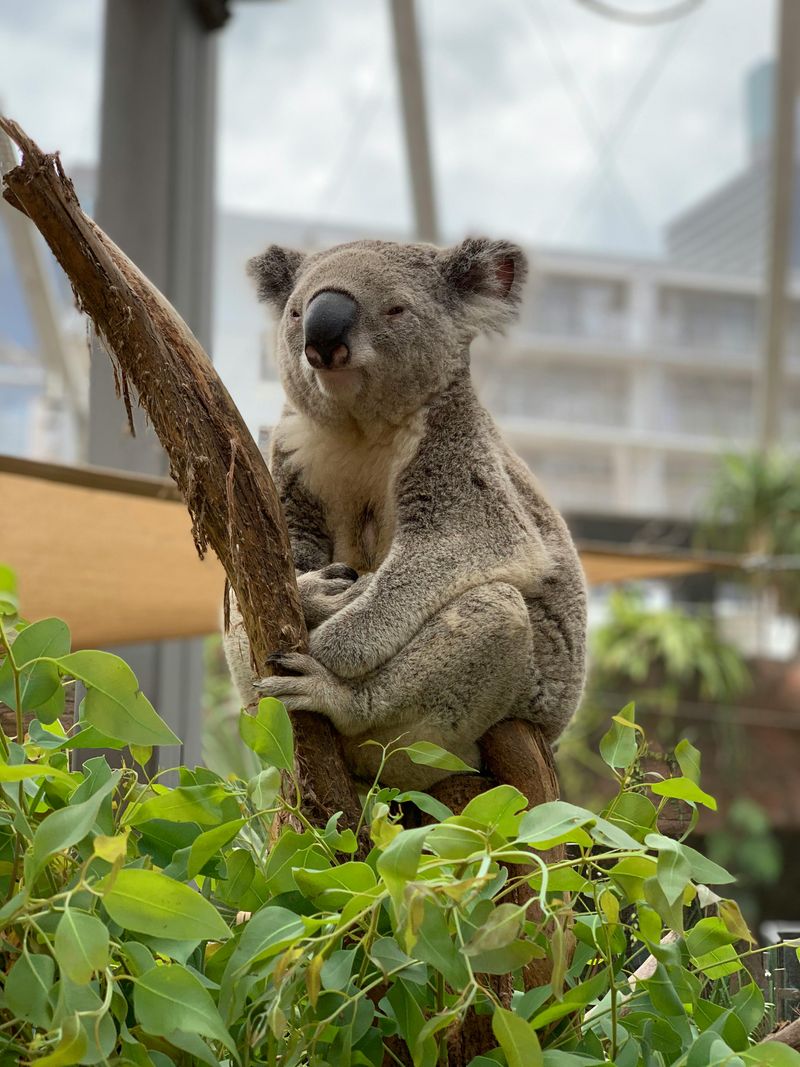
Koalas are iconic symbols of relaxation, spending up to 18 hours a day sleeping in eucalyptus trees. Native to Australia, these marsupials have a diet consisting almost exclusively of eucalyptus leaves, which are low in nutrition and require lots of digestion.
To compensate, koalas sleep a lot to conserve energy. Their padded bottoms make tree branches comfortable resting spots, and their strong arms ensure they stay secure while napping. Despite their cuddly appearance, koalas are solitary animals, preferring a peaceful life alone amidst the treetops, where relaxation is their number one priority.
Giant Panda
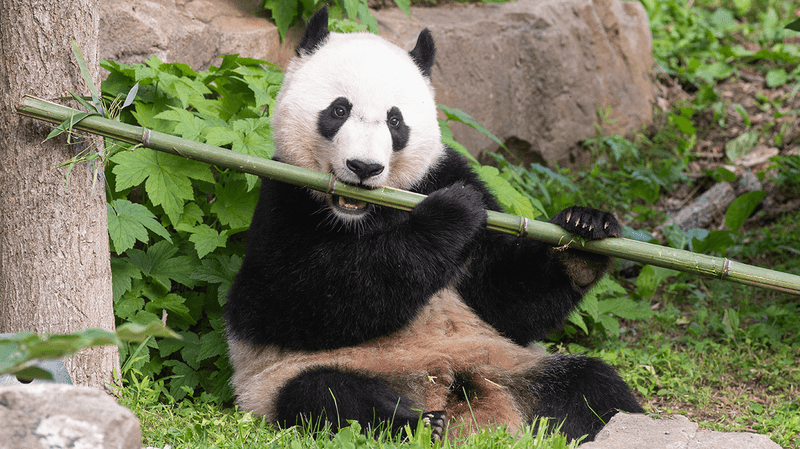
The giant panda is a black-and-white symbol of blissful laziness, spending most of its time eating or resting. Native to the mountainous regions of China, pandas have a diet that is 99% bamboo, which requires substantial chewing and digestion.
Their lazy lifestyle is a result of this low-energy diet, compelling them to relax to preserve what little energy they obtain. With their round, fluffy bodies, pandas are perfectly designed for lounging, often seen reclining while enjoying a bamboo snack.
Their relaxed demeanor and playful antics make them a beloved icon of leisure and tranquility worldwide.
Pygmy Hippopotamus
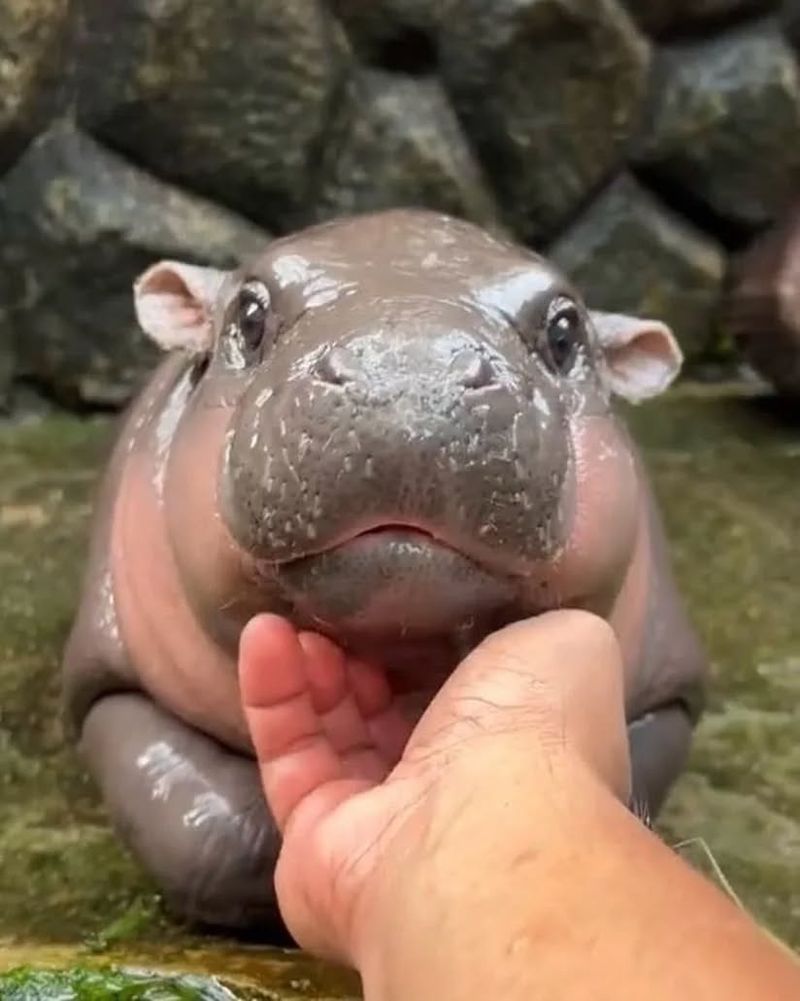
The pygmy hippopotamus is a shy, nocturnal creature often found lounging in the waterways of West Africa. Smaller than its more famous cousin, the common hippo, the pygmy hippo leads a solitary life. They spend much of their day submerged in water to keep cool, emerging mostly at night to forage.
Their semi-aquatic lifestyle allows them to rest and conserve energy during the sweltering day. Despite their heavyset appearance, these animals are surprisingly agile swimmers. Their quiet, reclusive nature and love for lounging make them one of nature’s most peaceful and relaxed creatures.
Sea Otter
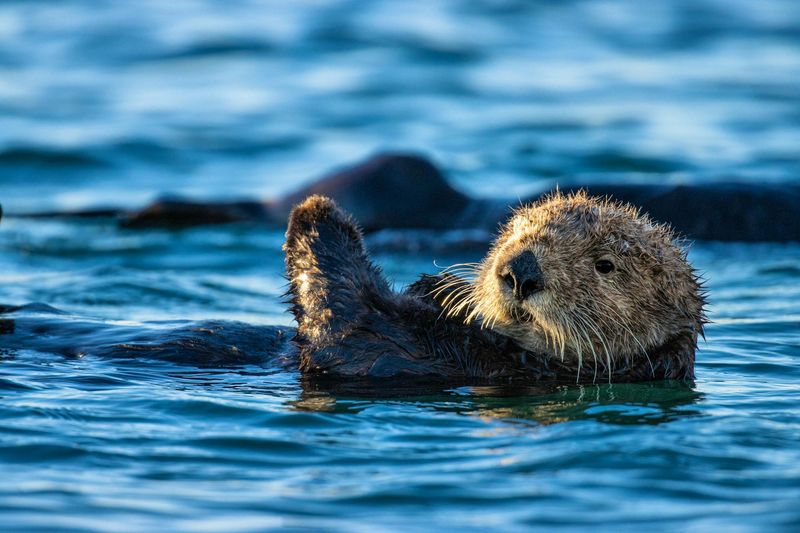
Sea otters are the epitome of relaxation, often seen floating on their backs in the ocean’s kelp beds. Found along the coasts of the northern Pacific Ocean, these marine mammals are known for their playful nature and grooming habits.
They spend a significant amount of time resting at the surface, using kelp to anchor themselves against the current. Sea otters have a high metabolic rate, so they eat a lot to maintain energy, but they always make time for relaxation. Their social groups, called rafts, add to their laid-back lifestyle, as they often nap together, embracing the ocean’s rhythm.
Galápagos Tortoise
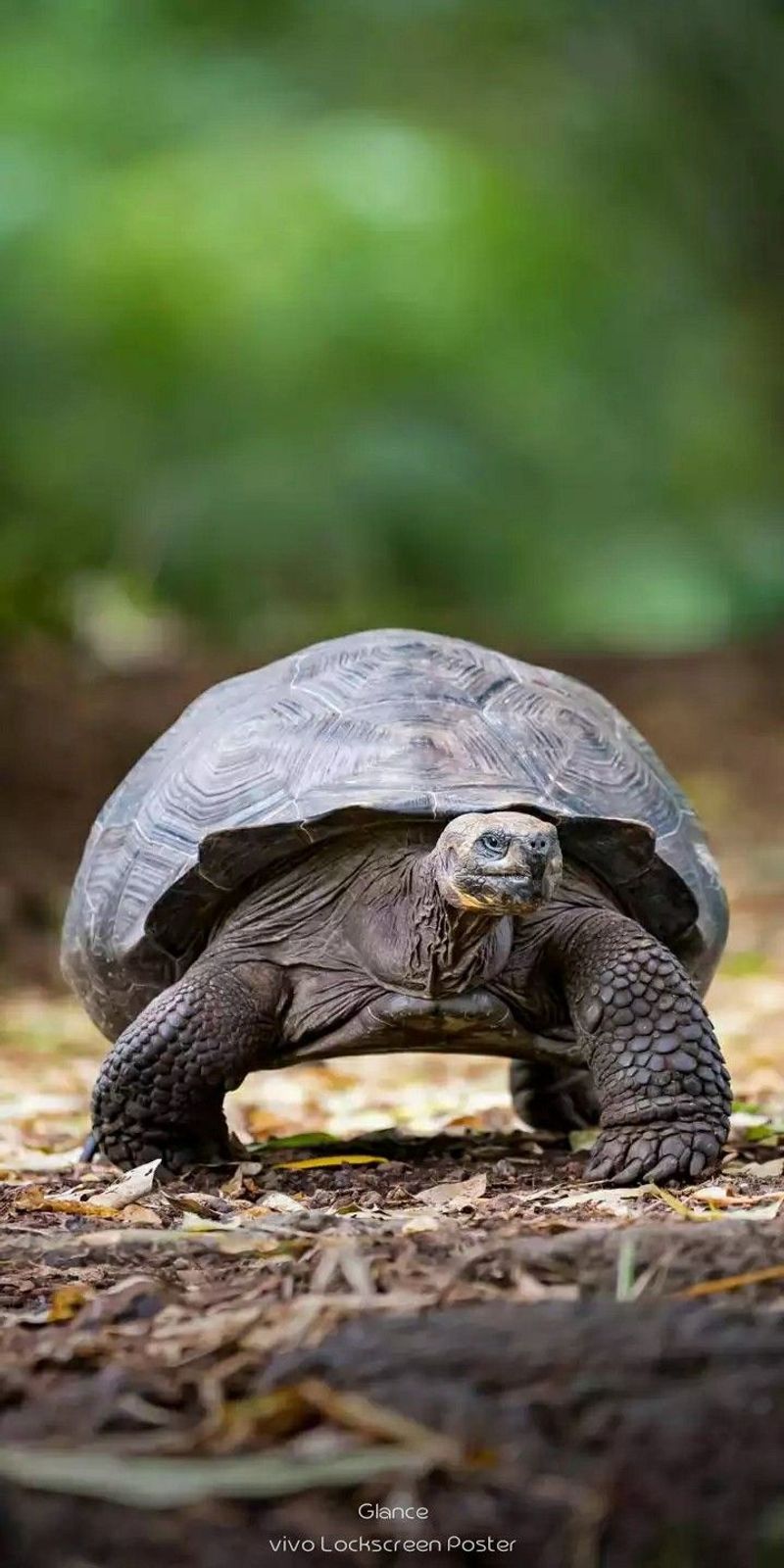
Famous for their slow pace, Galápagos tortoises embody the essence of a leisurely lifestyle. Endemic to the Galápagos Islands, these massive reptiles can live over 100 years, a testament to their slow and steady nature. They spend much of their day grazing on grasses and cacti, moving only when necessary.
Their slow metabolism allows them to survive on minimal resources. These tortoises are not just symbols of laziness; they are living examples of how a relaxed pace can lead to longevity. Their unhurried existence is a gentle reminder of the beauty of taking life one step at a time.
Nurse Shark
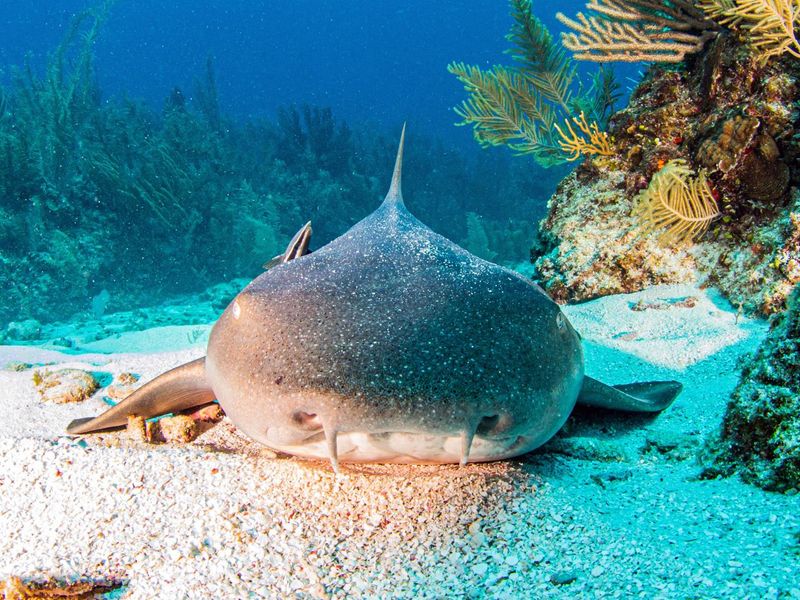
Nurse sharks are calm, sedentary creatures often found resting on the ocean floor. These sharks, residing in warm, shallow waters, exhibit a lifestyle of ease and relaxation. Unlike many other sharks, nurse sharks are nocturnal and spend their days napping in coral reefs or sandy sea beds.
They have the unique ability to pump water over their gills, allowing them to breathe without swimming. Their diet consists mainly of bottom-dwelling creatures, which they hunt at night. This languid lifestyle makes them one of the ocean’s most laid-back predators, perfectly adapted to a life of leisure.
Wombat
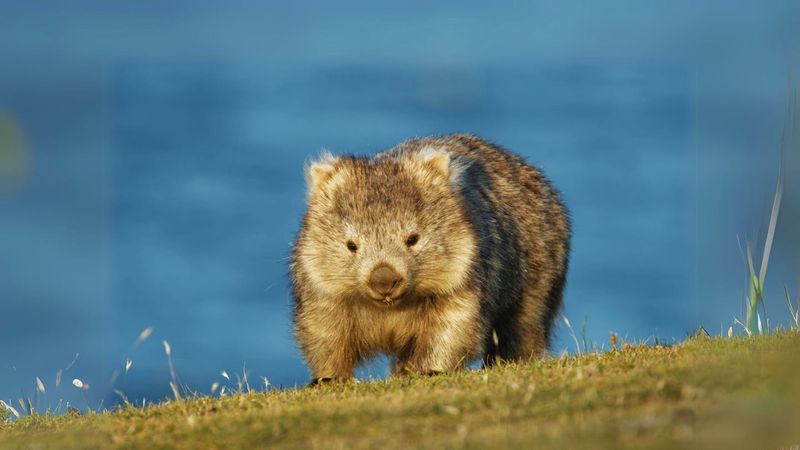
Wombats are burrowing marsupials native to Australia, known for their slow, deliberate pace and relaxed demeanor. These stout, muscular creatures spend much of their time in underground burrows, emerging mostly at night to forage. Their diet consists of grasses, roots, and bark, requiring minimal energy to find. Wombats have a unique backward-facing pouch that prevents dirt from entering while digging. Their sedentary lifestyle and efficient metabolism allow them to go for long periods without water. This combination of traits makes wombats quintessential experts in energy conservation and relaxation, perfectly suited to their harsh, arid environment.
Manatee
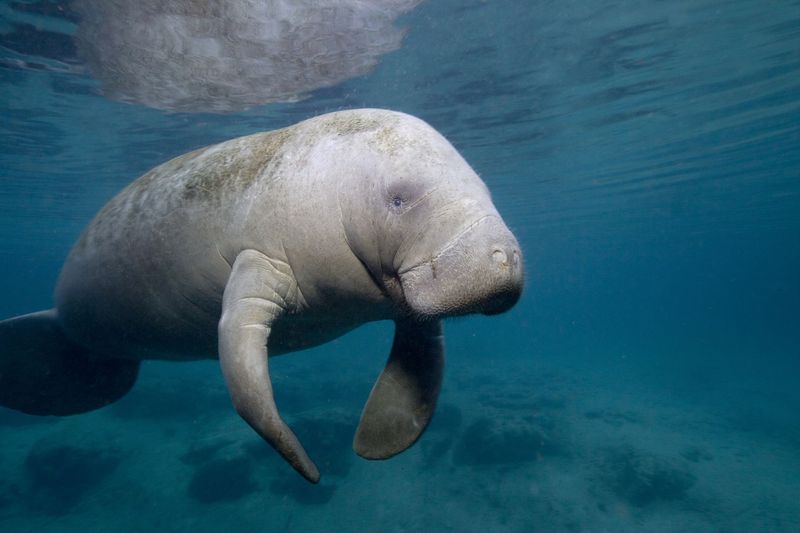
Manatees, often referred to as sea cows, are gentle giants of the water, known for their slow, serene movements. Inhabiting the warm coastal waters of the Caribbean, Gulf of Mexico, and Amazon Basin, manatees spend their days grazing on sea grass and other aquatic plants.
Their large, paddle-shaped tails propel them slowly through the water, conserving energy. Despite their size, they are graceful swimmers and can hold their breath for up to 20 minutes. Manatees have a calm, peaceful demeanor, embodying the essence of a laid-back aquatic life. Their easygoing nature and gentle habits inspire a sense of tranquility.
Leopard
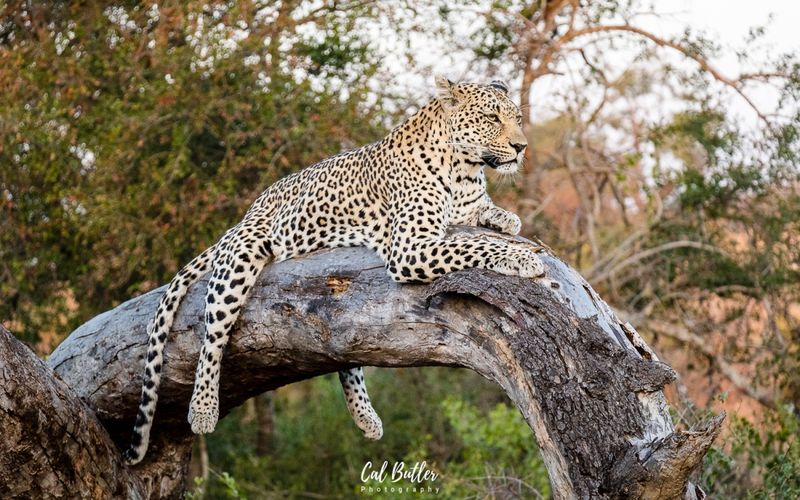
Leopards may be known for their strength and agility, but they are also masters of relaxation. Found in various habitats across Africa and Asia, these big cats spend a significant amount of time resting in trees. Their unique spotted coats provide camouflage as they lounge, observing their territory from above.
Leopards hunt primarily at night, using their daytime to conserve energy. Despite their solitary nature, they find comfort in their surroundings, adapting effortlessly to life both on the ground and above. This balance of power and repose makes leopards one of the most adaptable and relaxed predators.
Slow Loris
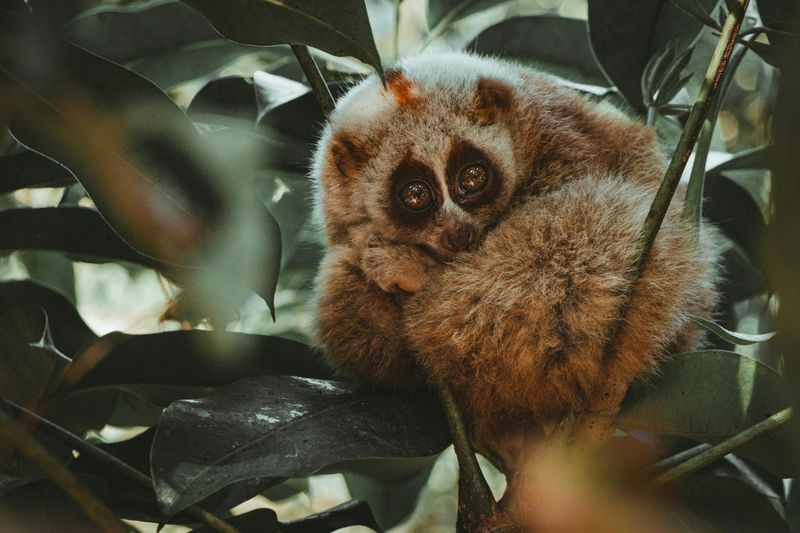
The slow loris is a fascinating primate known for its leisurely movements and nocturnal habits. Native to the jungles of Southeast Asia, these small, arboreal creatures spend their nights foraging among the treetops.
Their slow, deliberate actions help them go unnoticed by predators, making stealth their best defense. Slow lorises have a unique ability to remain motionless for extended periods, conserving energy and avoiding detection.
Their large, round eyes allow them to see clearly at night, enhancing their nighttime activities. Despite their endearing appearance, slow lorises carry a toxic bite, a surprising trait for such a relaxed animal.
African Lion
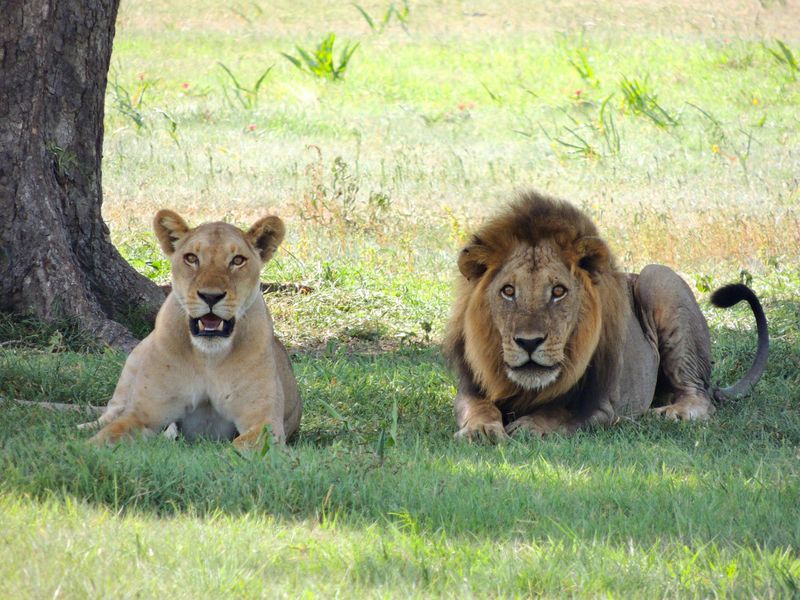
African lions are iconic symbols of the wild, yet they spend a surprising amount of time resting. Found across various parts of Africa, lions are social animals that live in prides. They typically rest for up to 20 hours a day, conserving energy for hunting.
Their powerful bodies are built for short bursts of speed, so resting is crucial to their survival. During the day, they lounge in the shade, often seen grooming each other and playing with cubs. This blend of laziness and strength showcases the unique balance that lions maintain, making them one of the ultimate relaxation experts.
Common Opossum
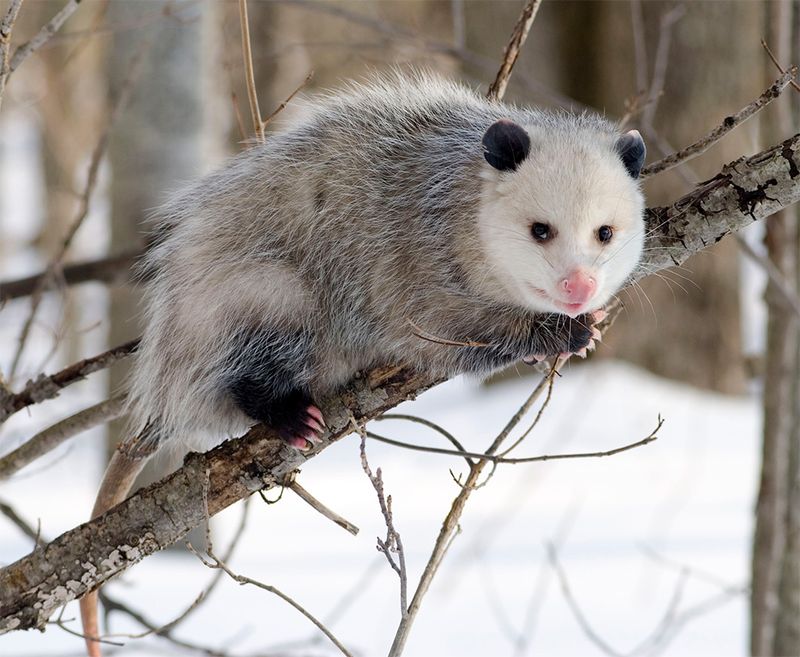
The common opossum is a nocturnal marsupial widely found across North America, known for its adaptable nature and relaxed lifestyle. These creatures are opportunistic feeders, foraging at night and spending their days resting in tree hollows or burrows.
Opossums have a unique ability to play dead, or “play possum,” as a defense mechanism. This state of apparent lifelessness can last for minutes to hours, allowing them to avoid predators.
Their solitary nature and laid-back demeanor enable them to thrive in various environments, from forests to urban areas, making them a quintessential example of adaptable laziness.
Green Sea Turtle
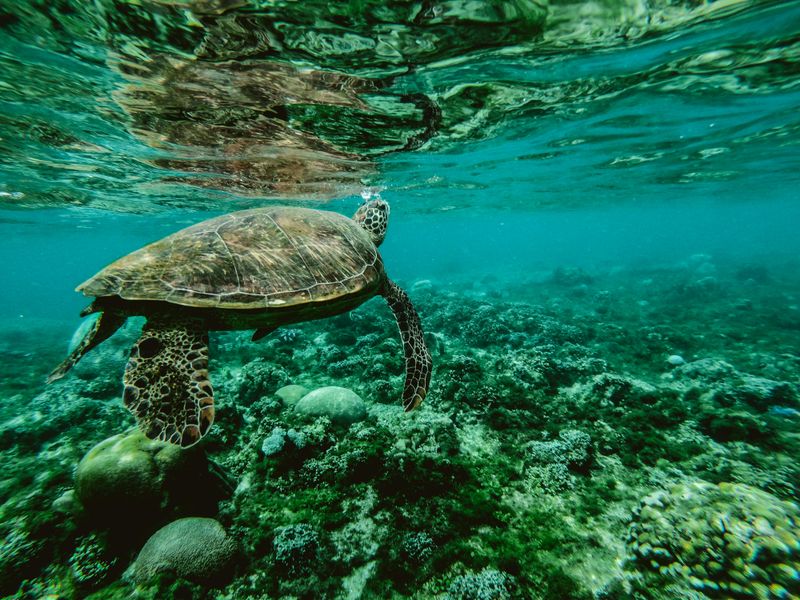
Green sea turtles are serene ocean travelers, gliding effortlessly through tropical waters. Found in warm oceans worldwide, these turtles are known for their long migrations between feeding and nesting sites.
Their diet consists mainly of seagrass and algae, which supports their slow-paced life. Green sea turtles spend much of their time floating near the surface, conserving energy as they bask in the sun.
This leisurely lifestyle is crucial for their survival, as they travel vast distances across oceans. Their gentle presence and relaxed movements embody the essence of tranquility, making them admired symbols of peaceful marine life.
American Bison
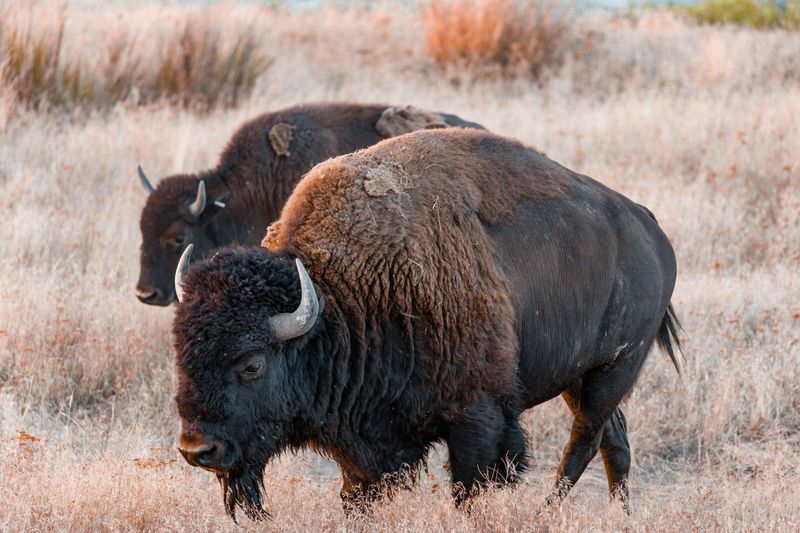
American bison, often referred to as buffalo, are massive herbivores native to North America’s Great Plains. Despite their size and strength, bison typically spend much of their time resting and grazing in open fields.
Their large, shaggy bodies are well-suited for withstanding harsh weather, allowing them to remain calm and collected in various conditions. Bison have a slow, deliberate pace, conserving energy as they move across vast landscapes.
Their laid-back lifestyle is a reflection of their adaptation to the wide-open spaces they call home. This peaceful existence makes bison an enduring symbol of the American wilderness.
Capybara
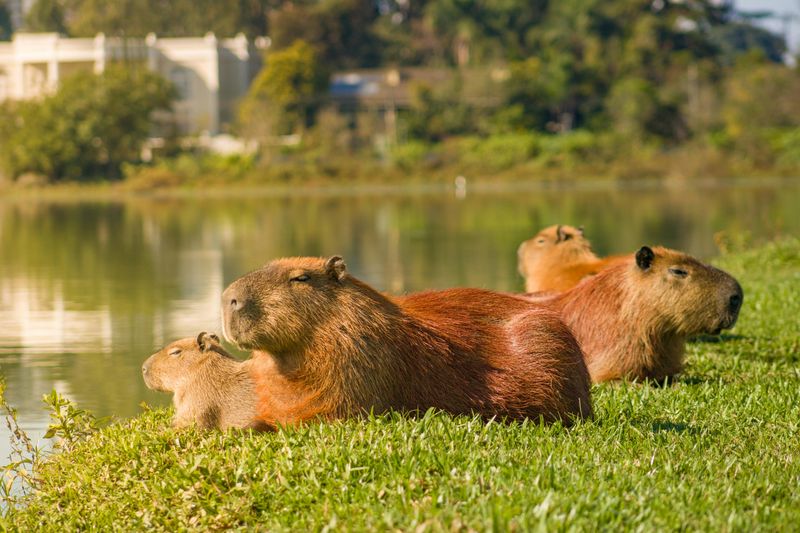
Capybaras, the world’s largest rodents, are sociable creatures that exemplify relaxation. Native to South America’s wetlands, these semi-aquatic animals are often found lounging near water bodies. Capybaras live in groups, spending their days grazing on grasses and socializing.
Their webbed feet make them excellent swimmers, adding to their leisurely lifestyle. Despite their size, capybaras are gentle and approachable, often seen interacting with other animal species. Their calm nature and love for water make them experts in unwinding, offering a serene presence in the lush landscapes they inhabit. Capybaras truly embrace the essence of tranquility, both on land and in water.
Polar Bear
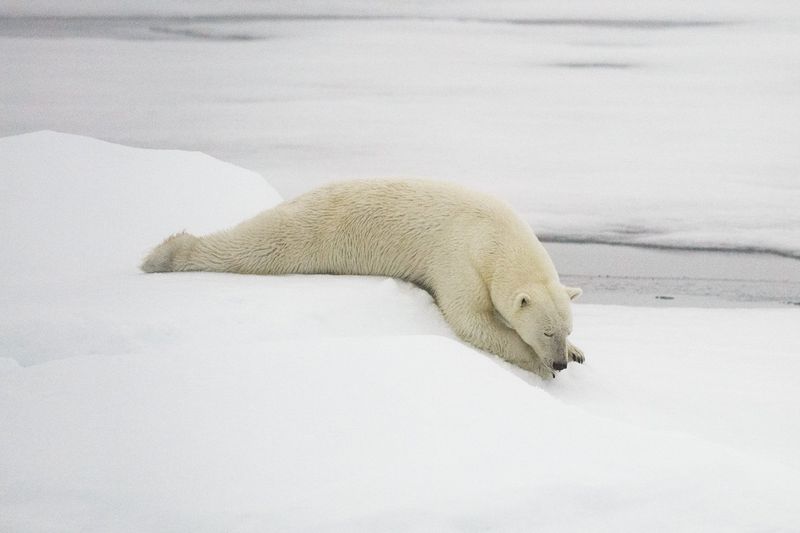
Polar bears are majestic creatures of the Arctic, known for their solitary and relaxed nature. Despite their powerful physique, these bears spend much of their time resting on ice floes, conserving energy for hunting.
Their diet primarily consists of seals, which they hunt using stealth and patience. Polar bears are excellent swimmers, often traveling long distances in search of food. Their thick fur and layer of fat keep them warm in freezing temperatures, allowing them to maintain a calm and composed demeanor. This combination of strength and tranquility makes the polar bear an iconic figure of the frozen north.
Alpaca
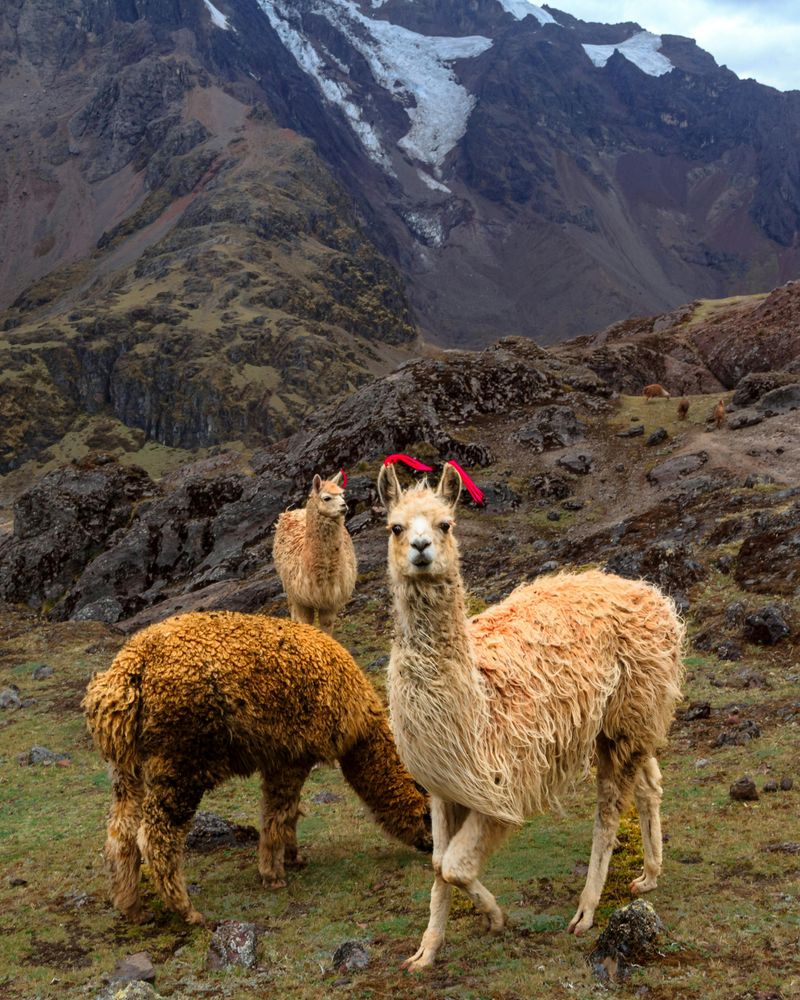
Alpacas are gentle, herd animals native to the Andes mountains in South America, known for their calm and peaceful nature. These animals are valued for their soft, luxurious wool, which they produce while living a relaxed lifestyle.
Alpacas graze on grasses and have a low-impact way of foraging that preserves their environment. Their social structure involves living in groups, where they communicate through gentle humming sounds.
Alpacas’ serene presence and gentle demeanor make them beloved animals in agritourism and fiber production. Their easygoing lifestyle and adaptability to various climates embody the essence of a tranquil existence.

